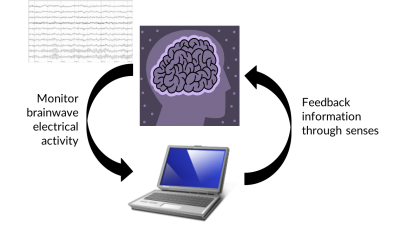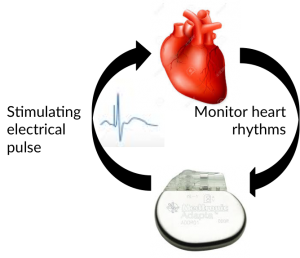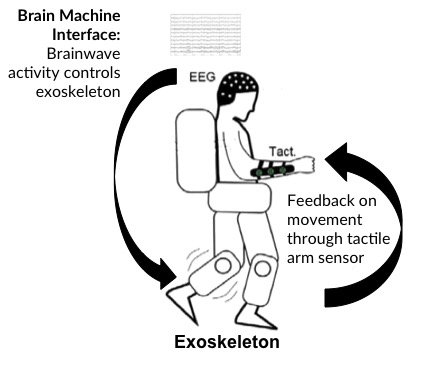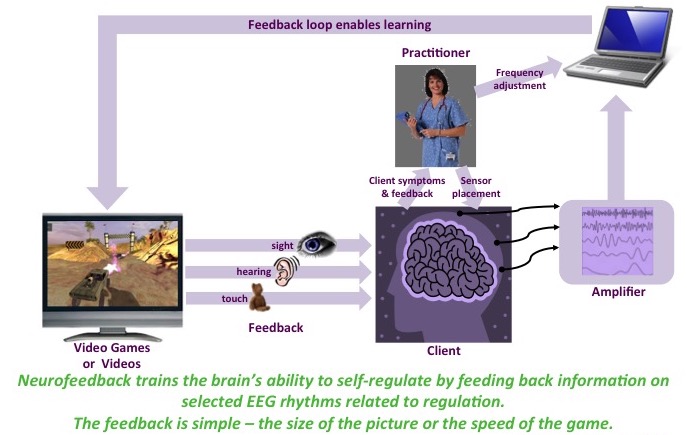How Neurofeedback Works
What is Neurofeedback brain training?
Brain regulation & Neurofeedback
Our brains have their own regulatory system, which can be compared with a car’s automatic transmission – when working well it will automatically adjust the amount of power through the wheels according to circumstances.
In our brains, this ‘power’ is bloodflow. Highly intelligent people are able to switch bloodflow to the right areas of their brains very quickly. Sometimes this automatic control system never develops properly, or is knocked off track by life events.
Our brains are amazing machines, the most complex structures in the universe. And it was discovered long ago that our brains will change in response to feedback.  But because it is difficult to give the brain direct feedback, this feedback-based learning mechanism is rarely used. This means that when the brain’s regulatory system misfires altogether, causing the mild to severe symptoms of conditions such as ADHD, ASD, depression or trauma, the lack of feedback means the brain doesn’t realize there is a problem. Just as it would be a struggle to drive a car without being able to see through the windshield, or fly an aircraft without radar, without a correctly functioning feedback mechanism the brain’s control function can’t correct itself – it does not know how well it is working.
But because it is difficult to give the brain direct feedback, this feedback-based learning mechanism is rarely used. This means that when the brain’s regulatory system misfires altogether, causing the mild to severe symptoms of conditions such as ADHD, ASD, depression or trauma, the lack of feedback means the brain doesn’t realize there is a problem. Just as it would be a struggle to drive a car without being able to see through the windshield, or fly an aircraft without radar, without a correctly functioning feedback mechanism the brain’s control function can’t correct itself – it does not know how well it is working.
So, in simple terms, Neurofeedback is a feedback tool to improve brain regulation. It closes the loop and provides high-quality information to your brain’s control function, allowing the brain to self-regulate and learn how to work better. Using a feedback control function to self-regulate, the brain is able to adapt and improve its own performance. And a bit like using training wheels on a bike, after some practice we don’t need the training wheels anymore.
Feedback systems are everywhere
This might seem like a strange concept, until you think about how we use similar feedback tools in everyday life.
Biology is full of feedback systems. In our bodies we have hundreds of feedback systems, for example to regulate our temperature, heart rate or blood-sugar level.
Sometimes these feedback systems stop working properly, or never develop properly in the first place. In some cases we can use external feedback systems to correct things.
For example, a heart pacemaker measures the heart rate and fires an electrical pulse back to the heart if it detects a need for correction.
A blood-sugar monitor detects when some insulin needs to be injected.
Neurofeedback is just another external feedback system that we use to get the brain working better. And it’s not just Neurofeedback practices like BrainTrainUT that use the ability for the brain to learn through brainwave feedback.
Neuroscience and Neurofeedback
In a 2016 study, neuroscientists described how they had used brainwave control and sensory feedback to teach paraplegics to learn how to walk using an Exoskeleton (bionic legs):
The neuroscientists created a feedback loop back to the sense of touch so the brain could learn how to adjust brainwave activity to control the Exoskeleton. There was no ‘right’ way to do it, no ‘wrong’ way – it was just information. And they learned to walk !
This is exactly the same method of learning used by Neurofeedback, except we use 3 senses (sight, sound and touch) and instead of learning to control the Exoskeleton, the brain is learning to control itself.
How does the Neurofeedback technique work and is it safe?
Firstly, our treatments are completely safe. There is no surgery, no medication and there are no side effects whatsoever. We measure brain activity by observing tiny electrical signals (known as brain waves). The technical name for this is electroencephalography, or EEG, but can be thought of simply as a kind of ‘stethoscope’ to see or listen to the brainwaves. 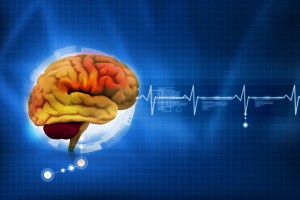 Sophisticated computer technology assesses these raw brainwaves and that data is used to provide direct feedback to the brain on how it is functioning, using video software. Clients can choose to ‘play’ video games with the brain, or watch documentaries, movies, or music videos. The picture or the game gets bigger or faster, and volume changes to reflect your brain activity. A cuddly stuffed animal that vibrates can be used to give extra sensory feedback.
Sophisticated computer technology assesses these raw brainwaves and that data is used to provide direct feedback to the brain on how it is functioning, using video software. Clients can choose to ‘play’ video games with the brain, or watch documentaries, movies, or music videos. The picture or the game gets bigger or faster, and volume changes to reflect your brain activity. A cuddly stuffed animal that vibrates can be used to give extra sensory feedback.
The good news is the client does not have to think; this all happens subconsciously – so the treatment works for very young children as well as adults. The patient just needs to relax and let the brain use its own ability to self-regulate. Obtaining information directly from the brain and providing feedback straight back via the senses, in real time, is what makes Neurofeedback unique and so successful.
BrainTrainUT is a leader in making this unique combination of technology and skills available in Utah, with the goal to improve the lives of 2,500 people by 2020.
To discuss how we can help you or your child, please call us at (801) 686-9334 today.Click to read in more detail about our BrainTrainUT Training Program.

